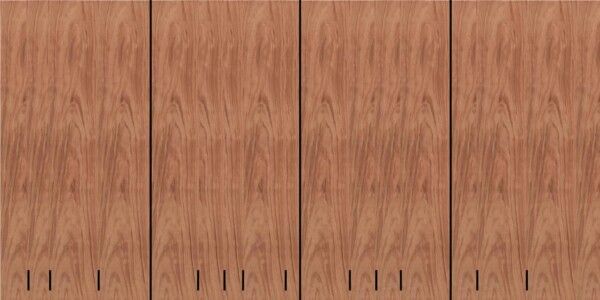Veneer Cut
Veneer is a very thin layer of wood that is produced by slicing or peeling timber. Only the finest quality timber is suitable for producing veneer. The importance of veneer to woodworking is the efficient yield of beautiful wood surfaces; it is much greater with veneer than with sawn lumber. Very little of the timber is wasted in the production of wood veneer. The minimal waste that is generated is still a natural material that won’t pollute our world for generations to come. Wood veneer is a very sustainable and low impact use of our precious timber resources.
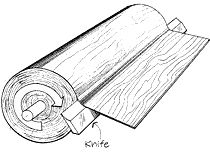
Lathe Peeling or Full Round Rotary Slicing
In rotary slicing, a whole round log is mounted on a lathe and turned against a blade. Rotary cutting or “peeling” of a log produces a continuous sheet of veneer as if the tree were a roll being unrolled. It is the most economical method of cutting. Veneer cut this way varies in pattern as it cuts through the successive layers of growth rings. A rotary cut veneer can be wide enough to produce a full-sheet (single piece) faces. This method, however, does not lend itself to creating matching faces, due to the inconsistency of the grain patterns.
This method of cut is also used for very exotic woods like burls and uniquely figured species like bird’s eye maple, Sapele Pommele, and Macore Mommele. In order to achieve veneer sheet sequences, we score the log or burl at one point. This produces sheets that begin wide and gradually get narrower as the blade cuts closer to the logs and burls heart.
For all veneers that will not be rotary sliced, the logs are sawn into halves, thirds, or quarters or more.

Half-Round Slicing
With half-round slicing, a half, third, or a quarter of a log is attached to a plate on a lathe and turned. This method adds width to an otherwise narrow log by increasing the radius of the cut. Half-round slicing is used to accentuate the variegated grain in certain woods. However, it can also be used to achieve a flat- or plain-sliced veneer appearance.
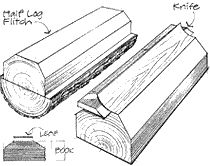
Plain Slicing
In plain slicing, the most common process for fancy veneer manufacturing, a half, third, or a quarter of a log (the flitch) is mounted on the vacuum flitch table with the heart away from the blade. The cut is then made with the blade parallel to the length of the log. Flat slicing or plain slicing produces consecutive leaves of veneer and produces the standard appearance of veneer (the “cathedral” or flame-shaped arch) that exemplifies plain sliced cherry, ash, oak, and other species. This cut of the veneer is ideally suited for wall panels, doors, and furniture because of the consistency in its grain, and the ability to match sequences of leaves.
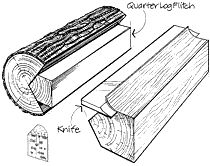
Quarter Slicing
In order to achieve veneer with a very straight grain, quarter sliced veneer is often specified. The quarter of a log is mounted on the vacuum flitch table so that the growth rings are perpendicular to the cutting blade. Quartered leaves are cut consecutively, are narrower than plain sliced, and are easily matched. This cut requires the largest diameter of logs. However, quartered white oak is often sliced specifically for its appearance of a distinct “flake” marking – which is actually created by the veneer knife bisecting prominent radial patterns in the tree, called medullary rays.
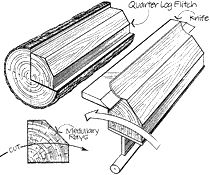
Rift Slicing
Rift slicing also achieves a straight grain pattern but avoids the appearance of “flake” that occurs in some species when quarter sliced. Rift slicing uses a “stay log lathe,” which cuts with a rotary action. A quarter of the log is fixed to a plate on a turning stay log. As the flitch is rotated, the blade and angle can be varied so that the wood is cut exactly to produce the very straight rift grain. Most often, this method is used with oak. Other species such as rift-cut maple, walnut, and cherry can be specified to be rift cut to achieve wider sheet widths. Since rift grain is generally the straightest and free from cathedrals and variations in grain, it is used to enhance verticality and is easily sequenced and matched.
Veneer Matching
There are three matching processes to consider when using veneer: Veneer Matching, Panel Matching, and Panel Positioning.
Veneer Matching occurs first and specifies how individual veneer leaves will be joined together on the face of the panel. Panel Matching is then required to define how the completed veneer face is positioned during the production of the panel. Panel Positioning involves the orientation of finished panels during the construction process.
Matches chosen for each of these processes can have a dramatic impact on the look of the veneer and the yields required for production. The effects of matching can vary depending on the species, cut, size of the leaves, and unique qualities and figure of each log. While there are several standard and special ways to match veneer and panels, the most common methods are described below.
Book Match
Consecutive leaves of veneer are flipped open facing each other like pages in a book, creating a mirror image of the previous leaf. The symmetrical pattern accentuates the grain, figure, and decorative characteristics of the log. Book matching can create color variation and caution must be taken as flipping every other leaf can produce alternating “tight” and “loose” faces that reflect light and accept stain differently – often producing a “barber pole” effect. Book matching is the most common technique and is often used with plain, quarter, or rift sliced veneers.
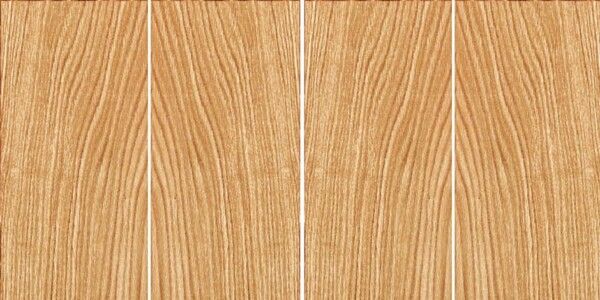
Slip Match
Consecutive leaves of veneer are slid or “slipped” across each other and joined side by side, creating a repeating grain pattern across the panel. While some color contrast can occur at the joints, slip matching produces fairly uniform color because all leaves are similarly oriented, resulting in a repeated grain that generally prevents the “barber-pole” phenomenon. Slip matching is a common technique that is often used with quarter and rift-cut veneer to provide a clean straight grain look..
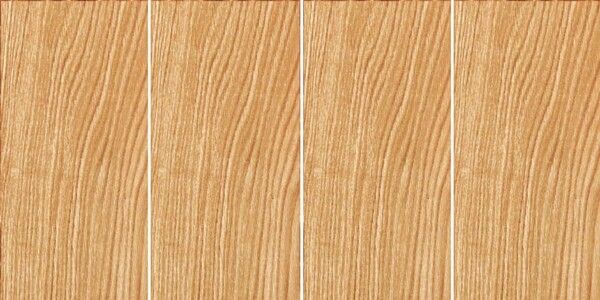
End Match
Two consecutive leaves of veneer are book matched and the next two are flipped, creating a four-piece end match (also called a book-and-butt match). End matching creates beautiful patterns and accentuates swirly grains and the irregular characteristics of the veneer. This method makes good use of shorter veneer leaves and is often used with burls and crotches.
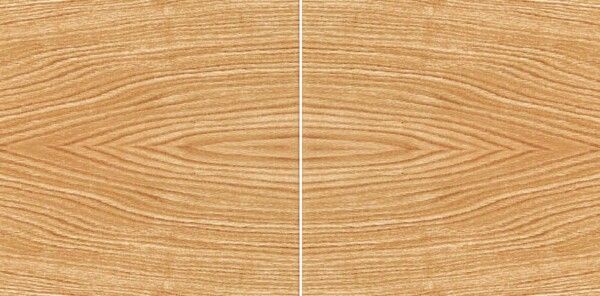
Random Match
Leaves are positioned as if randomly stacked, board by board – deliberately unmatched to bring out the color and grain. Random matching creates the appearance of solid wood with a casual or rustic feel and is an excellent way to use flitches with short leaves or those with inconsistent width, color, and grain.
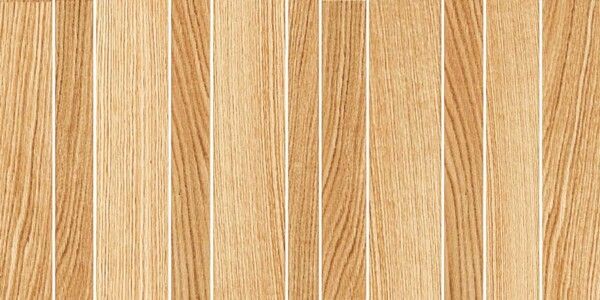
Special Matches
Veneer leaves can be creatively positioned to produce a wide array of unique decorative patterns. Certain species and cuts of veneer are often matched to produce unique designs and accentuate the character and figure of the wood. Box match, diamond, herringbone and parquet matching are just a few of the many special matches that are often used.
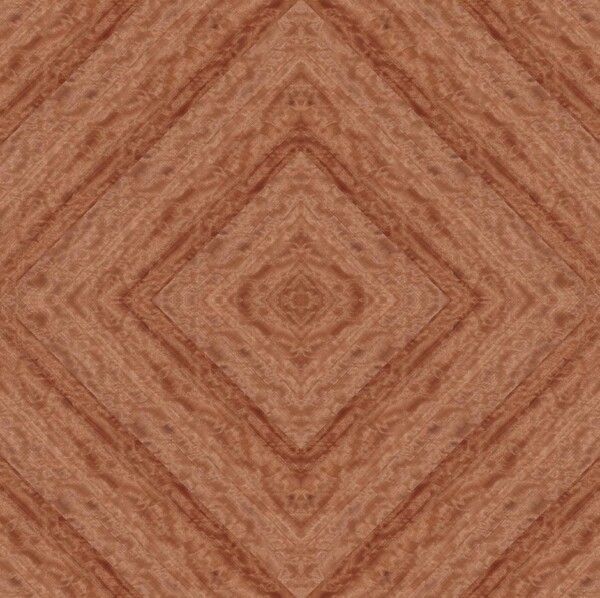
Panel Matching Methods
Center Panel Match
Veneer leaves can be creatively positioned to produce a wide array of unique decorative patterns. Certain species and cuts of veneer are often matched to produce unique designs and accentuate the character and figure of the wood. Box match, diamond, herringbone and parquet matching are just a few of the many special matches that are often used.
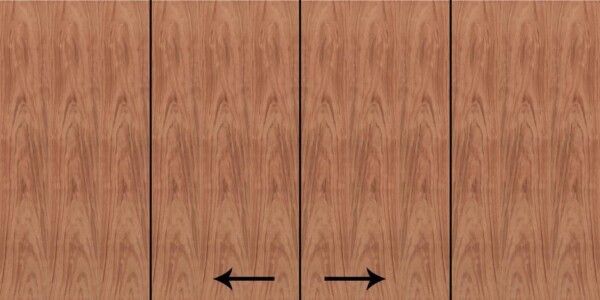
Balance Panel Match
The width of each veneer leaf used is the same giving a more symmetrical look than running matched panels. In balance panel matching the face is not center balanced and an odd or even number of leaves may be used. Grain may change between panels over long runs as the characteristics of the veneer change through the use of the flitch. Panels may be sequenced and numbered for adjacent use.
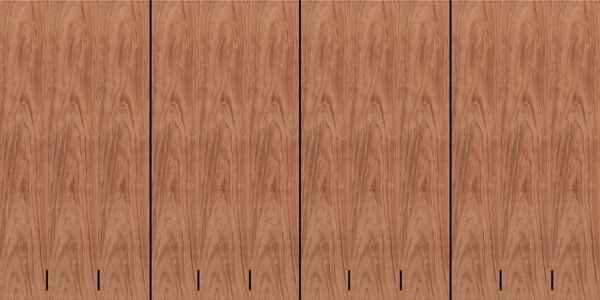
Running Panel Match
A natural change in the veneer leaf width is common and acceptable and each veneer face is assembled from as many veneer leaves as necessary producing a non-symmetrical look. The pattern starts on one side of the panel and leaves are added next to each other until the edge of the panel is reached. Each veneer face is assembled from as many leaves as necessary and horizontal grains are generally not matched. Panels are rarely sequenced or numbered for adjacent use.
